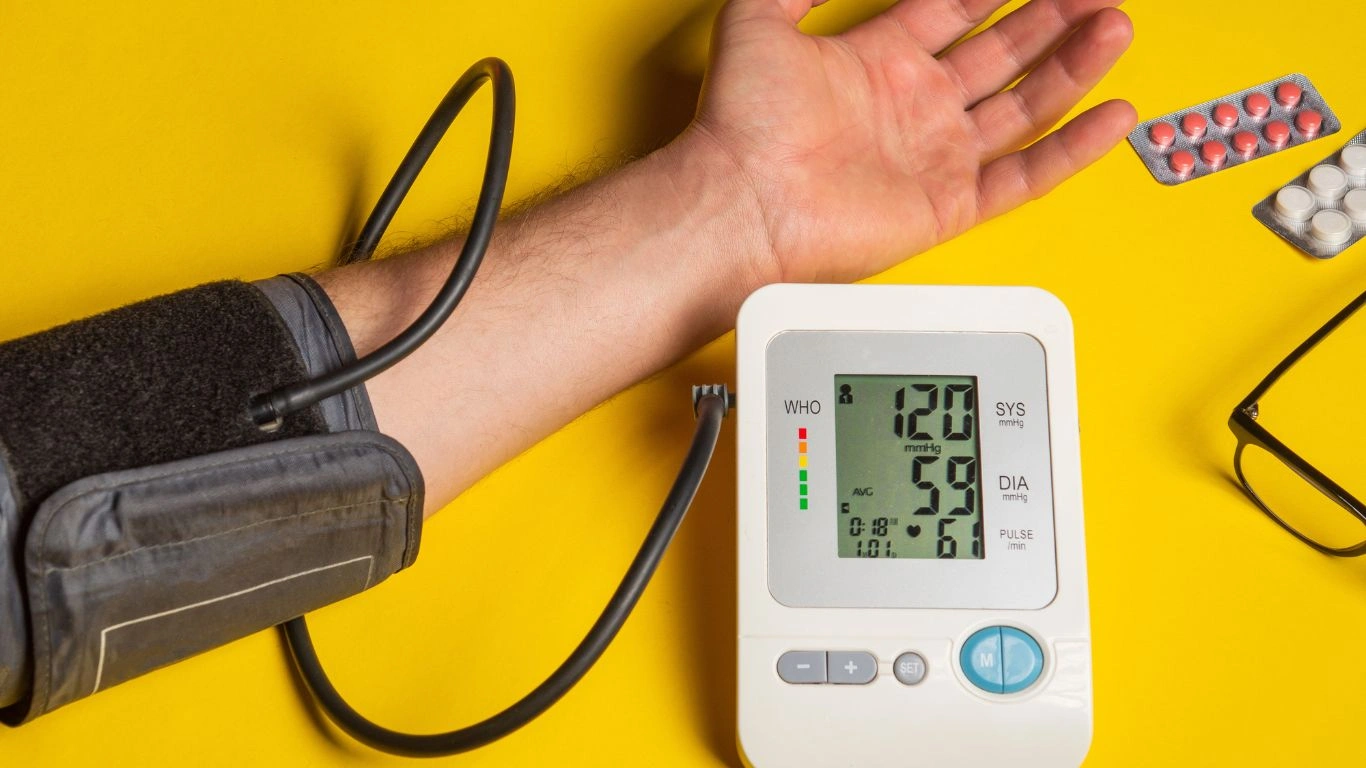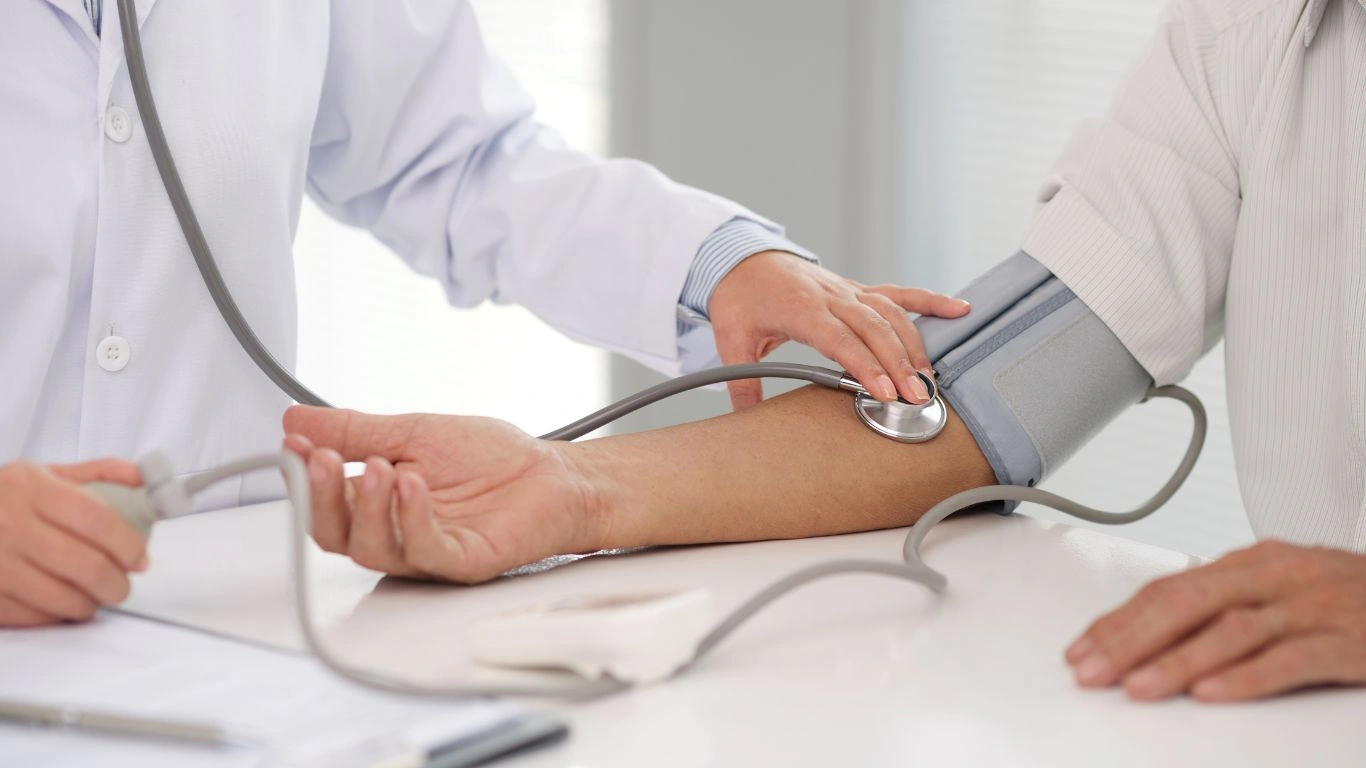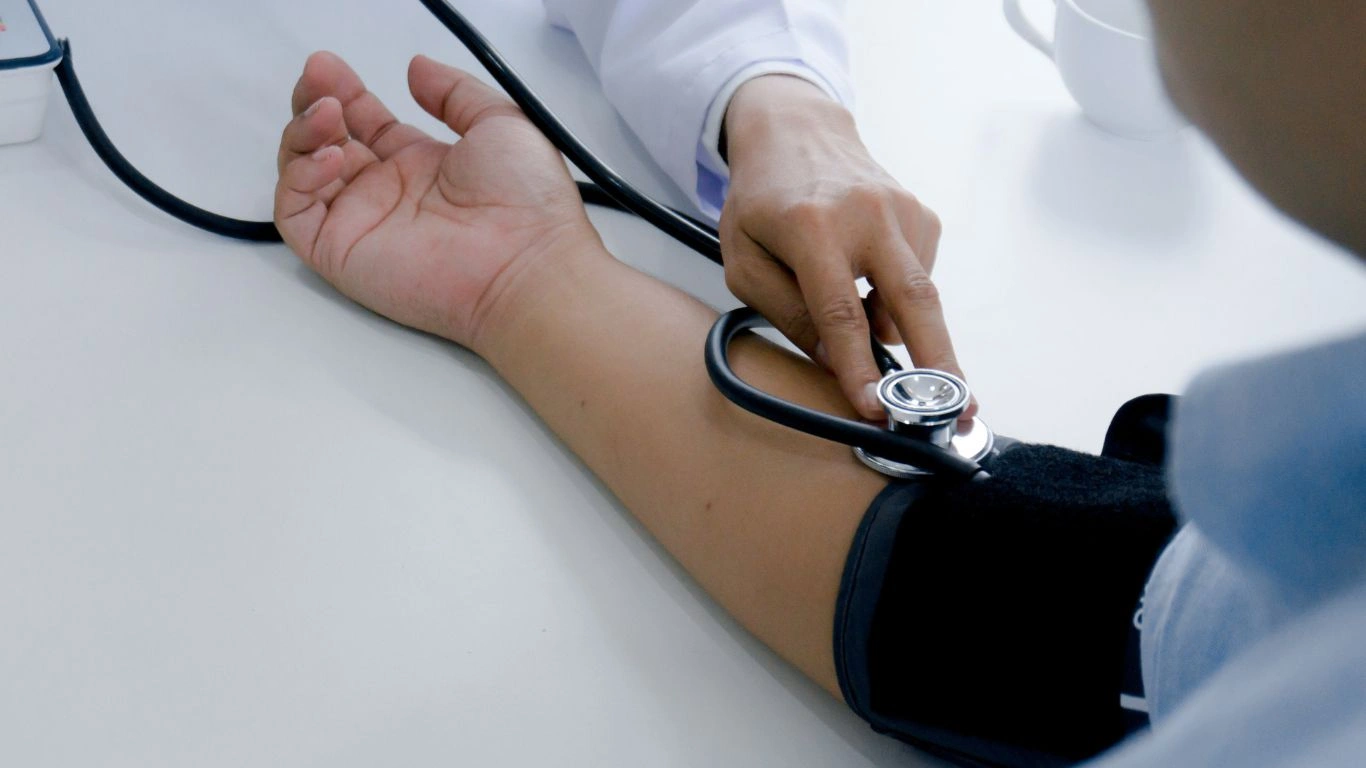How Blood Pressure Changes During Fasting: Key Insights for Hypertension
Fasting has been practiced for centuries—religiously, culturally, and now, more recently, for health and wellness. But let’s talk about what not enough people are really diving into: how blood pressure changes during fasting. As an Internal Medicine physician who’s spent years working with patients managing hypertension, I’ve seen firsthand how periods of fasting can lead to surprising (and sometimes confusing) shifts in blood pressure. Whether it’s intermittent fasting, prolonged water-only fasts, or even religious fasting like during Ramadan, your body isn’t just burning fat—it’s recalibrating in many complex ways. Blood pressure is one of the most reactive metrics in this process.
What Happens to Blood Pressure When You Fast?

Let’s break it down. When you start fasting, several hormonal and metabolic shifts occur. Initially, there’s a drop in insulin levels, your body starts using up glycogen, and eventually, fat becomes the primary energy source. But here’s where it gets interesting—your blood vessels respond to this energy shift. I’ve had patients on antihypertensives who suddenly find themselves lightheaded or dizzy during a fast. Why? Because their blood pressure may dip lower than expected.
Early Hours of Fasting
During the first 12 to 24 hours of fasting, you’re still burning through stored glycogen. Sodium and water are flushed out, which leads to a mild diuretic effect. And guess what? That alone can lower blood pressure. I’ve seen this effect often enough that I warn my patients to keep an eye out for symptoms like fatigue, dizziness, or even mild headaches during the early fasting window.
Longer Fasts & Autonomic Nervous System Shifts
Once the body moves into deeper fasting (we’re talking 24+ hours), it’s not just about metabolism—it’s also about autonomic balance. The sympathetic nervous system—the fight or flight mechanism—tends to tone down, especially with consistent fasting practice. This means vasodilation can occur more easily, lowering systolic and diastolic pressure.
In my clinic, I’ve observed:
- Patients with borderline hypertension seeing significant drops after 2-3 weeks of intermittent fasting.
- Some hypertensive patients requiring medication adjustments due to sudden dips.
- Others reporting improved sleep and heart rate variability, which are indirectly tied to healthier BP patterns.
Why Fasting Affects Blood Pressure Differently for Everyone

Here’s where things get nuanced. No two people respond to fasting in the same way—especially when hypertension is involved. Your body’s response hinges on several variables, like:
- Baseline BP and medication regimen – Are you already on ACE inhibitors or diuretics?
- Hydration status – Even a slight dehydration during a fast can send BP dipping low.
- Length and type of fast – 16:8 intermittent fasting is very different from a 72-hour water-only fast.
- Activity level during the fast – Light walking vs. strenuous exercise can yield opposite effects.
Personally, I’ve guided a lot of patients through fasts and can confidently say the more educated they are going into it, the better the outcome. There’s no one-size-fits-all. I remember one patient who was gung-ho about trying alternate-day fasting but had to scale back after his systolic BP dropped from 150 to 110 within a week. Good news? We ended up reducing his meds. But that’s only safe when it’s done intentionally and monitored.
Hormones, Kidneys, and Blood Pressure: The Fasting Trifecta

If we’re really going to understand how blood pressure changes during fasting, we need to look at the bigger picture—the hormonal axis and kidney function. When fasting, your insulin levels drop. That’s not just a win for blood sugar; it’s also a win for BP. Insulin promotes sodium retention. Lower insulin = less sodium = less volume = lower blood pressure. It’s a domino effect.
Then there’s aldosterone—your body’s salt-retaining hormone. Some studies show fasting can blunt aldosterone secretion temporarily, making it easier for your body to excrete excess fluid. In people with salt-sensitive hypertension, this can result in noticeable BP improvement.
But here’s a real-world caveat I’ve seen: If you over-restrict sodium during fasting while on BP meds, especially diuretics, you may end up feeling worse. Balance is key. As much as I love a well-structured fast, I always remind patients to respect the biochemistry of their own bodies.
Who Should Be Cautious?
Fasting isn’t for everyone. And when it comes to blood pressure, there are red flags I look out for before green-lighting a fast:
- Uncontrolled hypertension (systolic BP consistently over 160 mmHg)
- Orthostatic hypotension or a history of fainting
- Advanced kidney disease or heart failure
- Multiple antihypertensives or recent med changes
In these cases, I often recommend easing into shorter fasts with close monitoring. Sometimes just reducing meal frequency without a full fast can still yield BP benefits—without the risks.
How to Safely Monitor Your Blood Pressure During Fasting

Monitoring your blood pressure while fasting can seem like a daunting task, especially if you’re not used to keeping track of it regularly. But trust me, it’s a lot easier than it sounds, and it’s essential for understanding how fasting affects your body. As someone who spends a lot of time working with patients on blood pressure management, I’ve learned that the most important thing is consistency. Whether you’re fasting for a few hours or several days, knowing where your numbers stand gives you peace of mind and allows you to make adjustments as needed.
How Often Should You Check Your BP During a Fast?
For my patients, I generally recommend measuring blood pressure at least twice a day during a fast: once in the morning after you wake up and once before bed. This gives you a good sense of how your blood pressure is fluctuating throughout the day. Of course, if you’re on medication or have a history of dramatic BP changes, you may want to measure it more often, especially if you’re feeling any dizziness or lightheadedness.
Why morning and evening? The morning reading will tell you how well your body has adapted to fasting overnight, while the evening reading gives insight into how your body is handling the fast after several hours of being in a fasted state. This also helps you pinpoint any patterns or problems with blood pressure regulation that might require tweaking.
What to Do if Your BP Is Too Low
During fasting, it’s not uncommon to see a slight dip in blood pressure, especially if you’re new to it. But what happens when your blood pressure drops too low? In my experience, people often don’t realize how low their BP has gotten until they experience symptoms like dizziness, blurry vision, or fatigue. These can be subtle at first but become more pronounced the longer you fast.
If you experience low blood pressure during fasting, here’s what you can do:
- Increase your salt intake (within reason) – Salt can help retain fluids and boost blood volume.
- Stay hydrated – Dehydration can drop your BP quickly. Water, electrolytes, and herbal teas can help.
- Take a break from fasting – If you’re feeling consistently low or faint, it’s okay to stop fasting for a day or two to let your body recover.
- Check your meds – If you’re on antihypertensive medications, you may need to adjust them temporarily.
If symptoms persist or if you’re unsure about what’s happening, don’t hesitate to contact your healthcare provider. It’s always better to be cautious than to ignore a warning sign, especially when it comes to your health.
How Long-Term Fasting Impacts Blood Pressure

Now, let’s talk about the long haul. We’ve covered the immediate effects of fasting on blood pressure, but what happens when you fast over extended periods? As with any health regimen, the long-term impact of fasting on blood pressure isn’t a one-size-fits-all. I’ve had patients come to me saying they feel amazing after a few weeks of fasting. Others, however, have experienced significant changes in their blood pressure patterns, which led us to adjust their treatment plans.
Over time, extended fasting can:
- Promote more stable blood pressure – The longer you fast, the more likely your body becomes accustomed to lower insulin levels and improved fluid balance.
- Trigger hormonal balance – Fasting may help regulate the hormones that influence blood pressure, like aldosterone, cortisol, and renin.
- Reduce the need for antihypertensive medications – Many of my patients who’ve fasted regularly report a gradual reduction in their reliance on blood pressure meds.
- Improve endothelial function – Fasting helps your blood vessels relax and dilate, which can have a positive long-term effect on blood pressure control.
The Science Behind the Long-Term Benefits of Fasting
When we dive into the science, fasting triggers a state known as autophagy, where your body starts clearing out old, damaged cells and regenerating new ones. This process improves many aspects of health, including heart health and blood pressure regulation. Studies suggest that intermittent fasting can lead to better blood flow, reduced inflammation, and a more regulated autonomic nervous system—all of which contribute to healthy blood pressure levels.
But just as fasting has long-term benefits, it can also have risks, especially if done improperly. Some of the most common concerns I address with my patients are:
- Electrolyte imbalances – Prolonged fasting can affect potassium, sodium, and magnesium levels, all of which are crucial for maintaining proper heart and muscle function.
- Over-restricting calories – Extreme calorie restriction can be stressful on your body and lead to higher cortisol levels, which can spike your blood pressure.
- Inadequate hydration – If you’re fasting and not drinking enough water, this can worsen the diuretic effect, leading to low blood pressure and dehydration.
So, while fasting offers impressive health benefits, it’s essential to approach it with care. If you’ve been struggling with hypertension and are considering fasting, make sure to work closely with your doctor, especially if you’re on any medications that could interact with your fasting regimen. Your health team can help you find the right balance.
The Role of Diet and Fasting in Blood Pressure Regulation

Let’s take a step back and talk about the importance of diet in the context of fasting. If you’re fasting, you’re not just going without food—you’re changing how your body interacts with the nutrients you consume when you do eat. The foods you choose during eating windows play a significant role in how your blood pressure responds to fasting.
Some dietary considerations that can help maintain healthy blood pressure during fasting include:
- High potassium foods – Potassium helps balance sodium levels and eases the strain on your heart. Foods like bananas, sweet potatoes, and spinach are excellent choices.
- Reducing processed foods – Highly processed foods are often loaded with sodium, which can increase blood pressure. Keep your meals clean, whole, and nutrient-dense.
- Hydrating foods – Eating foods with high water content, like cucumbers, watermelon, and celery, can help maintain hydration levels.
In my clinical experience, combining intermittent fasting with a whole-foods-based, low-sodium, potassium-rich diet is one of the most effective ways to improve blood pressure over time. So, the next time you break your fast, reach for foods that support heart health. Your blood pressure will thank you.
Understanding the Risks of Fasting with Hypertension

Fasting is powerful, but it’s not without its risks, especially if you have hypertension. If you’ve been following along, you’ve learned how fasting can positively impact blood pressure—lowering it in some cases. But as with any medical intervention, there are potential downsides that need to be addressed. From my personal experience, I always take a cautious approach with patients who have high blood pressure or are on blood pressure medications. It’s essential to monitor your health carefully during a fast and to know when to call it quits.
Potential Complications to Watch For
As much as fasting can work wonders for regulating blood pressure, it’s not without its complications. While some experience lower blood pressure and improved health markers, others run into issues. So, let’s break down the main risks of fasting with hypertension:
- Severe Hypotension (Low Blood Pressure) – If your blood pressure drops too low during fasting, you may experience dizziness, fainting, or even a dangerous fall. It’s crucial to listen to your body and stop fasting if these symptoms occur.
- Electrolyte Imbalances – Long-term fasting, especially if you’re not properly hydrating or supplementing with electrolytes, can throw off your sodium, potassium, and magnesium levels. These imbalances can cause irregular heartbeats and other complications.
- Increased Stress Hormones – Fasting can increase cortisol levels, which may temporarily raise blood pressure, especially in individuals who are stressed or have underlying conditions. In these cases, it’s important to make sure you’re managing your fasting regimen and stress levels appropriately.
- Impact on Kidney Function – Prolonged fasting can sometimes stress your kidneys, particularly if you’re already dealing with kidney-related hypertension. Your kidneys are responsible for regulating blood pressure, and fasting without adequate hydration may cause strain.
Before you start any fasting regimen, especially if you have hypertension or are at risk for it, I highly recommend speaking with your doctor. It’s always safer to take a proactive, individualized approach when making any major changes to your health routine.
How to Safely Incorporate Fasting into Your Routine

If you’re ready to try fasting and you’re dealing with hypertension, the key is moderation and gradual progression. I’ve seen many patients start with smaller, more manageable fasts—nothing extreme right away. Here’s how to incorporate fasting into your routine safely:
Start Slowly
If you’re new to fasting, ease into it. You don’t need to jump straight into 24-hour fasts. Start with intermittent fasting, like the 16:8 method—fast for 16 hours and eat during an 8-hour window. This can help your body get used to fasting without putting too much stress on it. Over time, you can lengthen your fasting periods if you feel comfortable doing so.
Stay Hydrated
Hydration is everything. You may not be eating, but your body still needs water to function properly. When fasting, especially if you’re on medication for hypertension, dehydration can worsen the risk of low blood pressure and electrolyte imbalances. Drink water throughout the day, and consider adding a pinch of sea salt to your water for electrolyte balance.
Eat Nutrient-Dense Foods
When you do eat, make sure your meals are filled with nutrient-dense foods that support healthy blood pressure. Focus on a diet rich in vegetables, fruits, whole grains, lean protein, and healthy fats. Foods like leafy greens, beets, and fatty fish are excellent choices for supporting heart health.
Monitor Your Blood Pressure Regularly
As mentioned before, keeping track of your blood pressure during fasting is essential, especially if you’re on medication. If you notice your blood pressure dipping too low, it’s important to take a break from fasting and consult with your healthcare provider. With consistent monitoring, you can stay in control and make adjustments as needed.
Consult Your Doctor Regularly
Before starting any fasting regimen, especially if you have a history of hypertension, make sure to consult with your doctor. They can help determine if fasting is a good fit for you, how long you can safely fast, and what adjustments might be needed to your medications during fasting periods. Your doctor will also help guide you through any health concerns that arise along the way.
References
If you’re curious about the science behind fasting and blood pressure regulation, there are plenty of reliable resources available for further reading:
- National Institutes of Health (NIH)
- Health.com
- American Heart Association
- Centers for Disease Control and Prevention (CDC)
These organizations offer valuable insights and research that can deepen your understanding of fasting, blood pressure, and overall heart health.
Disclaimer
While fasting may be beneficial for some individuals, it is not suitable for everyone, especially those with existing health conditions such as uncontrolled hypertension or cardiovascular disease. Always consult your healthcare provider before starting any fasting regimen, particularly if you’re on medication or have a pre-existing medical condition. The information provided in this article is for educational purposes only and should not be used as a substitute for professional medical advice.

Dr. Gwenna Aazee is a board-certified Internal Medicine Physician with a special focus on hypertension management, chronic disease prevention, and patient education. With years of experience in both clinical practice and medical writing, she’s passionate about turning evidence-based medicine into accessible, actionable advice. Through her work at Healthusias.com, Dr. Aazee empowers readers to take charge of their health with confidence and clarity. Off the clock, she enjoys deep dives into nutrition research, long walks with her rescue pup, and simplifying medical jargon one article at a time.






